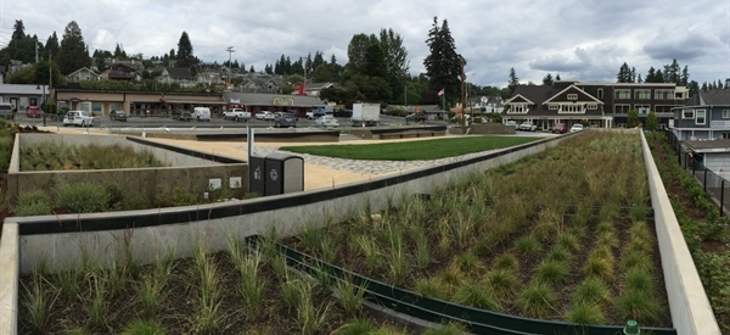
Guidance for Ensuring Bioretention Media Performance Success Part 1: Standards of Practice
How to Ensure Bioretention Media Success: Standards Every Engineer Should Follow
Engineered media is the heart of bioretention system performance. Therefore, preserving media integrity is of the utmost importance. A successful bioretention installation involves oversight not just onsite, but having a framework in place for transferring raw materials to a blended, commercially installed product. This framework should encompass standards of practice (SOPs) utilizing rigorous verification testing for qualifying, sourcing, verifying, producing, storing and handling media. SOPs can include internally developed procedures tailored specifically to managing media from its inception to installation, as well as ASTM, EPA, or other approved testing methods for verification testing of composition, hydraulic capacity, and quality performance.
Sourcing media
Bioretention media suppliers should follow SOPs dictating how to properly source and qualify new components to make certain the final media product performs per design specifications. Where the base materials for media production are sourced should be questioned. For example, are quarry sands being mined from land historically used for agriculture or from an EPA Brownfield site? What is the feedstock source for compost? Conducting appropriate analysis of potential pollutants within the source materials is needed so issues such as leachable nutrients, metals, or organics can be identified.
Considering the availability and uniformity of the materials composing the media is also important. If any of the media components are of limited supply, requalification efforts can be time consuming and result in the use of an alternative source not previously qualified due to project time constraints. Finding an available, consistent source allows for less variability in the final product and ensures alignment with the product specifications.
Producing media
If media is blended on a project specific basis by the contractor, especially in situ, a production SOP describing the process for bioretention media manufacturing is crucial to guaranteeing the media and components are procured from approved suppliers and that proper equipment and components are utilized.
How media is blended can vary for many reasons, including who is performing the blending and what equipment they have. Media blending is similar to how two different people following a cooking recipe might end up with a meal tasting quite different depending on the level of precision. Therefore, a production SOP alone will not always result in the same outcome, and media specifications become a critical part of the framework for media recipe consistency, which will be discussed in a later post.
Storing and handling media
Storage SOPs are just as critical as blending SOPs. If bioretention media is to be stored before use, especially if being stored onsite before installation, an SOP should be provided to contractors or other purchasers on how to properly store media. The main issue with media storage is cross contamination from other stored materials, tainted water, and debris, especially if a site is not stabilized. Bagging or protecting media with tarps with storage on a concrete pad is ideal, as demonstrated in the photo below.

Media should maintain some moisture to prevent segregation of components and ensure a homogeneous blend during storage and transport. The photo below demonstrates visual differences in the same mass of media under different moisture conditions.

If media is stored as a stockpile, samples should be periodically collected by the supplier following a proper sampling SOP, and samples tested to ensure media is within spec. Media transport has its own set of issues as well. Trucks hauling bulk media should be cleaned before use to prevent contamination from remaining residue from previous loads, and loads should be covered. Additionally, each new media batch produced should receive a batch number for tracking purposes. Reference samples should be inventoried should there be any future issues requiring further testing.

I’ll continue my discussion of ensuring bioretention media performance in my next blog post that will look at issues related to QA/QC and certification.
